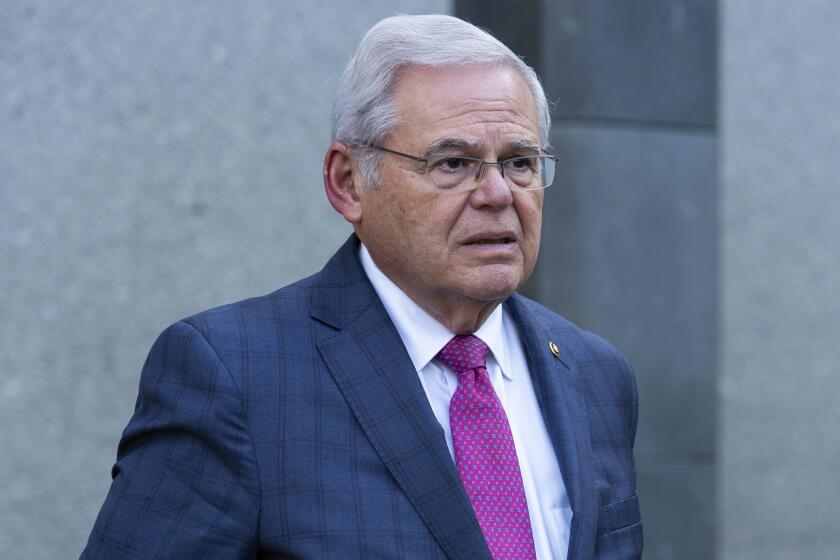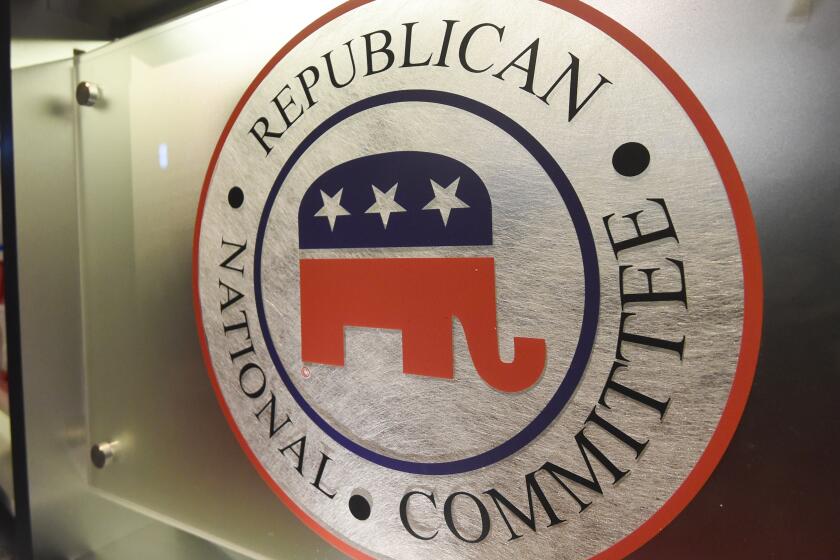Salinas Stumps for Japanese Investment : Trade: Experts are skeptical about the Mexican president’s chances of success. Japan is mired in a deep recession.
When President Carlos Salinas de Gortari took office five years ago, he pledged to make Mexico a Pacific Rim nation, economically as well as geographically.
During his term, Mexico joined influential Pacific Rim organizations, culminating last month in the country’s inclusion in the Asia-Pacific Economic Cooperation.
But Mexico’s relations with Asia have been disappointing in one crucial respect: investment. Japanese investment, the bulk of Asian capital going to Mexico, soared in the mid-1980s but has since stagnated.
Salinas is in Japan today trying to revive the country’s flagging interest in Mexico. Armed with a new foreign investment law and the North American Free Trade Agreement, he is visiting Tokyo and the industrial city of Osaka on the last leg of an Asia tour that also included China.
However, experts on U.S.-Mexico-Japan trade, such as Gabriel Szekely, are skeptical about his chances for success in Japan, which is suffering from a serious economic downturn and generally diverting more capital to high-growth areas in East Asia.
“It’s too late,” said Szekely, who is a professor at both El Colegio de Mexico here and the Center for U.S.-Mexico Studies at UC San Diego. “This trip is not going to help very much.”
Although U.S. investment in Mexico has always overshadowed Japanese interests, Asia had emerged as a potential new source of foreign capital in the 1980s, when Japanese investment grew at 13% a year or more. Since 1989, however, the flow of money from Japan has slowed to a trickle.
While total foreign investment in Mexico grew 9.3% during the first nine months of 1993 to $40.9 billion, Japanese investment rose just 4.1%.
“The level of Japanese investment over the past five years has been pitiful,” Szekely said. “In spite of the expectations Salinas built, this is one area where he has failed.”
The Mexican government is not yet ready to accept defeat.
“Lately, Japanese investment has centered on developing Southeast Asian markets and China,” said Pedro Noyola, assistant secretary of foreign trade. “What we have done is realize this and improve our competitiveness vis-a-vis these countries.”
Japanese executives have consistently said their major interest in Mexico is its proximity to U.S. and South American markets and that the country’s major drawback was the uncertainty surrounding foreign investment policies.
Regulations issued in 1989 are far more liberal toward investors from abroad than the 1973 foreign investment law, but the Japanese did not find that reassuring. They were concerned about what might happen if the government had a change of heart and issued new, stricter regulations, said a Japanese business consultant here, who spoke on the condition his name would not be used.
“They worry about complying,” he said. “They don’t understand that the rules can be bent.”
The new foreign investment law, just passed by the Mexican Congress, removes the uncertainty caused by conflicts between the 1973 and 1989 laws, Noyola said. The new law specifically permits foreign investment in a wide range of industries, to reassure wary potential investors.
At the same time, NAFTA and similar trade pacts Mexico has signed with Chile, Venezuela and Colombia provide certainty about access to other regional markets for companies with a manufacturing base in Mexico.
“Japanese investors are interested in Mexico not only because of NAFTA, but also for Central and South American markets,” Noyola said.
He also sees a positive sign in Mexico’s re-entry into long-term Japanese bonds after an 11-year absence. Nacional Financiera, the government development bank, issued bonds in Japan six months ago, and the export-import bank, Banco Nacional de Comercio Exterior, expects to announce an issue soon, he said.
“The president will have an opportunity to present a very interesting outlook for Mexico vis-a-vis Southeast Asia,” Noyola said.
In addition, Salinas is expected to tell business leaders that his party’s nomination of former social development minister Luis Donaldo Colosio as its candidate for president assures that Mexico’s free-market economic policies will continue after he leaves office next year.
However, Szekely said Salinas will need more than NAFTA and a new foreign investment law to erase the bitter taste left by a history of investments and loans that went sour in the 1980s. For example, the government decided to close the Tubacero steel tube plant a decade ago without consulting its Japanese joint venture partners.
Similarly, Japanese banks felt cheated by Mexico’s foreign debt negotiations in the mid-1980s.
“The banks have been very bad ambassadors for Mexico with the Japanese business community,” Szekely said. “They have spoiled ventures for the trading companies.”
Besides, he said, the Japanese view the North American trade pacts as protectionist measures directed against them. For example, rules on domestic content--which determine whether a product is considered made in North America and eligible for tariff breaks--are much stricter under NAFTA than they were under the old U.S.-Canada trade agreement.
In addition, he said, “the Japanese are no fools. They know Salinas has no power now that the presidential candidate has been named. He’s a lame duck on vacation.”
Investing in Mexico
Foreign investment in Mexico has increased nearly 80% in recent years, although Japan’s investment there has been virtually flat.
More to Read
Start your day right
Sign up for Essential California for news, features and recommendations from the L.A. Times and beyond in your inbox six days a week.
You may occasionally receive promotional content from the Los Angeles Times.






